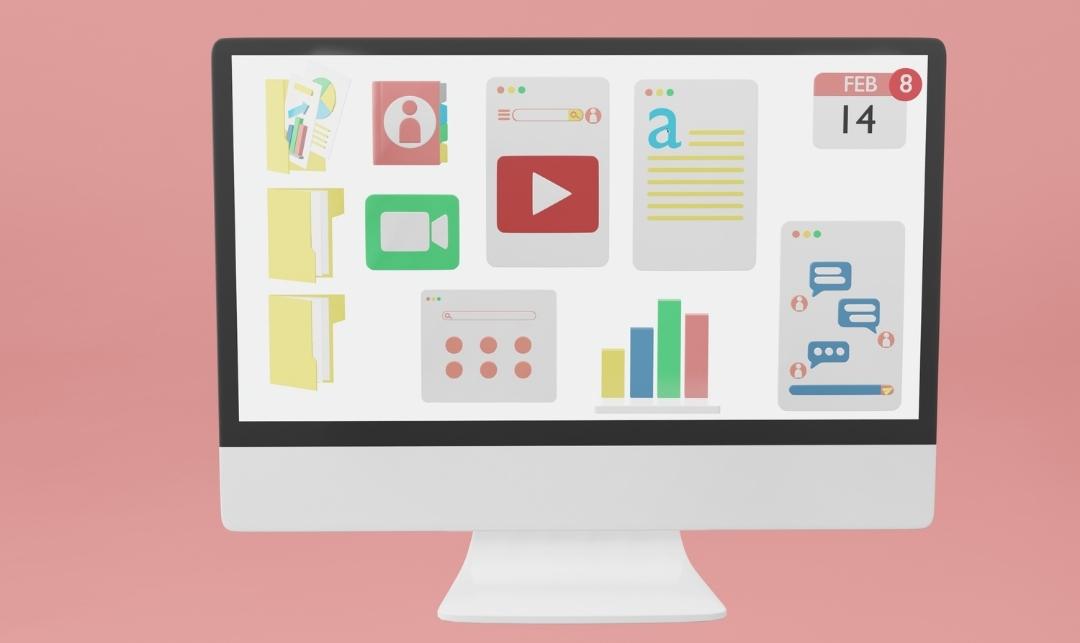MARKETING FIRST
We live in a marketing-centric world. Each time we step out of the house, we’re bombarded with subconscious marketing tactics from the ground up. From the foods we eat to the shoes we wear, companies use subtle suggestions to prompt us to buy their product.
It’s no different for the online world. How many times have you scrolled through a website before becoming uninterested within seconds? Clicking the “X” in the top right corner is so common, it almost feels like we do it on autopilot. The opportunities are endless.
So, how do companies keep customers engaged? What is it about certain websites that keep us hooked and willing to stay?
Crafting a killer website is no small feat. In this article, I explore a few ways you can create your next event website that will be sure to keep people engaged and willing to click through rather than click out.
ALL ABOUT BRANDING
It goes without saying that great branding is memorable. Even from a distance, we all know a Nike logo on a pair of shoes or an Apple computer at a coffee shop. Branding your event webpage is no different. You want customers to immediately engage with a website upon first visit. Knowing your brand strategy will help with that. The best event websites focus on the customer needs, are regionally specific and recognize the user. They also have clen, clear copy that is bold enough to read.
The look and feel of a website is an important part of that strategy. You want customers to associate your brand with the event. Your company logo and other branding materials such as images or graphics should be at the forefront of the website’s design. Visual presentation is everything. When it comes to crafting a memorable event website, looks are a huge part of it but also important to craft a killer value proposition. Customers will be able to understand the tone of the event and will be engaged from the very first click but they need to know the number one reason to attend. Design with that in mind.
EASE OF NAVIGATION
Once you’ve got branding under control, make sure your website is simple and efficient. Think of your own patience when it comes to a slow-loading webpage. How long are you willing to wait for information to be available? According to one study, many consumers aren’t willing to wait more than 3 seconds for a page to load.
So, when it comes to creating an event website, be sure to design with speed in mind. Quick access and fast scroll capabilities will help keep customers engaged. The next step is customer sign up.
Getting customers to sign up for your event is the ultimate goal. To that end, making sure the website itself is easy to navigate will make a world of difference. If your webpage has difficult to find sign-up buttons to register or links to find the agenda or themes of the day, customers will likely click through and they’re on to the next. The best event websites are designed with persistent or “Sticky menu” navigation and are an essential part of the structure of a modern event website. The most common is a fixed top navigation with an always present registration button so the user can still see it as they scroll the page. Sticky headers and navigation work best on websites that are action oriented like events. The best event websites have persistent navigation that can always be accessed for speakers, exhibitors, attendees, agenda and travel. Design your website so that customers can easily register and navigate through any sections on the website.
Slow or clunky websites simply don’t drive engagement in our age of instant gratification. Make sure your event website is simple to explore and understand.

Sticky Menu and Persistent Navigation Example from 7 Knots Digital Client: The Lead
USE VIDEOS
Video clips are an excellent way to engage customers to an event webpage. Rather than reading through large blocks of text or navigating to multiple drop-down options, users can simply watch a short video explanation of what it is the event plans to offer. The best websites are exciting through videos and visuals. They create teaser videos from past events or leverage speaker advocacy from their best speakers or attendees to draw the user in. They also have movement through animation or video.
Videos can help create excitement and anticipation for an event through visual aids.
In 2020 alone, nearly 245 million users watched digital video forms of content. Due to a global pandemic, that number has likely risen with the virtual event space expansion. In our digital age, video options simply make sense.
Make sure the videos you do use are responsive to both cell phone and computer use. Promotional videos on the website can also be utilized on social media accounts for increased engagement.
ADD CONDITIONAL POP-UPS
The best event websites are also adding effective pop-up overlays to reduce bounce rates, capture visitors information and market early bird offers or send users a more detailed agenda to customize their journey. There are numerous tools you can use to add effective pop-ups to your event website, including OptInMonster. The best event websites are personalizing the experience to show the right message to the right user at the right time. These include geolocation, and distinguishing new vs returning visitors.

Pop-Up Overlay Example from 7 Knots Digital Client: The Lead
LEVERAGE RETARGETING ADS
Retargeting can take a number of different forms. Event prospects rarely register on their first visit and the best event marketers recognize this and build a relationship with the user. Event marketers can place a pixel on their website that tracks its visitors and then target them with display ads while they are online. With the right technology, users can segment digital audiences based on various activities and attributes and correlate them with specific marketing messages. For example, you can highlight the speakers and reinforce their credentials or remind them of a must attend session or specific early bird offer. The best event marketers are retargeting users by persona and whether they have attended the event previously.


Retargeting Examples from 7 Knots Digital Client: FounderMade
SIGN UP HERE
Whether you’re planning an in-person, hybrid, or virtual event, the first step toward engaging your customers is to ensure you’ve created a killer event website. From branding to usability and everything in between, there are a number of tactics you can use to be sure customers will click through, stay engaged, and ultimately say ‘yes’ for the event sign up.
Proper marketing and branding will help grab a user’s attention and ease-of-use and a good layout will help keep them from clicking out and onto the next. Strong visuals and communication are key. A good website acts as a deciding factor on whether or not your potential customers will sign up.
The old adage “you never get a second chance to make a first impression” rings true when it comes to crafting a killer event website. You want to be sure your agenda page stands out among the crowd and is easy to digest. By following any of the tips above, you’ll not only create a great first impression, you’ll likely stand out from the crowd.
James Karklins is a lead generation and audience marketing expert with over 15+ years of experience in lead generation, audience growth and virtual events















































